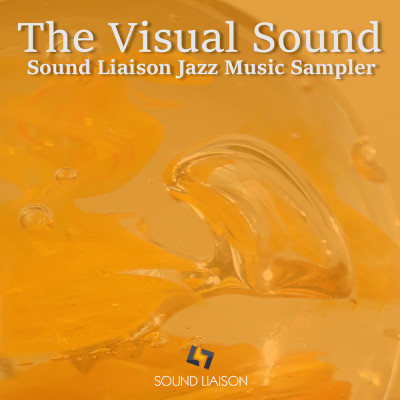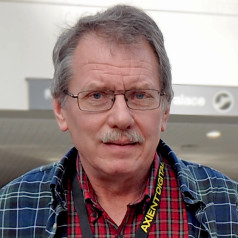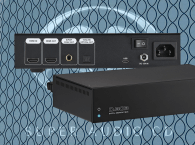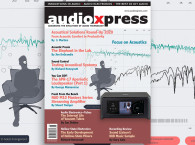
The company was founded by Frans de Rond and Peter Bjørnild. Bjørnild is a professional double-bass player with a background in both jazz and classical music. A native of Denmark, his musical education includes studies at Royal Danish Conservatory of Music as well as the Royal Conservatory (Koninklijk Conservatorium) in the Hague. De Rond, the engineer for all these recordings, is also a double-bass player, with an education in both recording technology and music from the Royal Conservatory. De Rond’s goal is to “create an almost visual sound field” that comes “as close to the natural, organic sound of the instrument as possible.” Bjørnild “believes that a recording should be as realistic and beautiful sounding as possible. As if, when closing your eyes, you find yourself in the best seat of the hall.”
De Rond notes that until recently his approach to recording was similar to that of most other engineers. He employed multi-microphone techniques, using one or more microphones per instrument, attempting to get the greatest separation by placing the performers in separate acoustical baffles. This method, used along with multi-track recording, allows a great deal of flexibility after the session, because the engineer has complete control over the balances and the stereo perspective long after the musicians have left the studio.
The problem de Rond noted was that the musicians don’t blend very well and don’t sound as though they are performing in the same acoustical space. Recording with many microphones also introduces phase artifacts. To avoid these problems, he did an about-face and decided to make a number of recordings with a single stereo microphone. It can sometimes take time to find the right spot for a single-point stereo microphone and, particularly when recording a live event, there are no second chances. But, when you get it right, as de Rond notes, the result is “phase coherence, perfect imaging, great sense of depth, and superior realism.” Musicians have been most enthusiastic about his efforts. He quotes bass player Clemens van der Feen as saying “I never heard my bass like this before on any recording. Finally it sounds the way I always wanted.”

Broadcasting Music Center
is the venue for recordings
made by Sound Liaison. The room
is the oldest radio studio in
the Netherlands.
(Photo courtesy of Sound Liaison)
According to the MCO website, Studio 2 is the oldest radio studio in the Netherlands. It’s a large room with a floor area of 1442 ft2 (134 m2) and a high, vaulted ceiling. The large floor plan can accommodate 80 audience members, making it suitable for concerts and recording sessions. The studio is equipped with its own, adjacent control room and a Steinway Model B grand piano. The studio has a distinguished history, hosting many famous jazz artists over the decades, including Django Reinhardt, Ray Brown, Ella Fitzgerald, Wes Montgomery, Clark Terry, and Eric Dolphyi. De Rond notes, “I like to record the musicians in one big good sounding hall. The unique sound of Studio 2 in the MCO building here in Hilversum is ideal for that purpose.”
A recording engineer looking for a single-point stereo microphone has many choices — Sound Liaison uses the Josephson C700S (see Photo 2). Josephson Engineering is a familiar name to readers of this magazine. Founded in 1988, the Santa Cruz, CA company started out designing and manufacturing measurement microphones. Its C550 is one of the most respected microphones available for acoustical and loudspeaker measurements.
In more recent years, Josephson has expanded into the competitive field of recording microphones, offering seven series of mics for studio use. There are two microphones in the C700 series. The C700A is a mono microphone incorporating 16 mm omnidirectional (pressure) and 26 mm figure-8 condenser (gradient) capsules. By controlling the mix of the pressure and gradient signals, any pattern from omni to figure-8 can be derived. The internal preamp is designed around a cascode FET input and a Class-A active balanced output circuit. The C700S adds a third, side-facing figure-8 capsule to the C700A. By combining the three signals, any coincident stereo pickup can be created, including Blumlein, X-Y, and M-S. The stereo image can be created on-the-fly, during actual recording, or the three signals can be recorded separately and mixed later, giving the engineer flexibility in production.
Sound Liaison doesn’t sell physical media — it offers downloads in both pulse-code modulation (PCM) and direct stream digital (DSD) formats. All its recording is done in DXD PCM format (DXD stands for Digital eXtended Definition). The DXD process was pioneered by Merging Technologies and involves recording at sampling rates higher than those used for conventional high-resolution PCM — either 352.8 kHz or 386 kHz, 24-bit (twice 176.4 or 192). Sound Liaison uses 352.8 kHz, probably because the most transparent conversion from PCM to DSD is from PCM files that are multiples of 44.1 kHz. Downloading the 352.8 kHz files provides audiophiles with a clone of their own studio masters but, as the company notes, its DSD files are not studio masters. These are conversions from the DXD PCM files. There’s one exception — the album Impromtu, featuring bassist Tony Overwater and pianist Bert van den Brink, was recorded simultaneously to PCM and DSD using two separate recorders. For those who do not have equipment that can handle the ultra-high-res DXD files, Sound Liaison also offers PCM conversions at 192 kHz and 96 kHz.
The Visual Sound Recordings
The Visual Sound is a sampler that includes 10 small-group jazz selections from Sound Liaison’s DXD albums, all mastered at 352.8 kHz. For review, I received the 10 selections in native DXD resolution as .wav files, down-sampled 96 kHz/24-bit FLAC files, and conversions to DSD 64, which is the base DSD resolution (the same as SACDs). Prices range from 9.75 to 19.75 Euros, depending on the resolution. Six of the recordings were made using multiple microphones, while the other four were made with a single Josephson C700S. The lists and photos of recording equipment used by Sound Liaison reflects its perfectionist approach, including Merging Technologies’ Horus microphone preamps, A/D converters and master clocks, plus AudioQuest microphone cables, power cables, and power line conditioners. Notes for the musical selections are on the Sound Liaison website.
My main digital player is an OPPO Digital UDP-205 (reviewed in audioXpress, November 2017). I copy media files to an external, portable hard drive connected to a USB 3.0 port on the OPPO with an AudioQuest Carbon cable. The OPPO’s HDMI audio output feeds a Monoprice HDMI audio converter with a Pangea Premiere SE HDMI interconnect. The Monoprice feeds full PCM audio resolution via S/PDIF to my Benchmark DAC3 HGC with a D.H. Labs D-75 cable fitted with Canare 75 Ω RCA connectors.
My preamp is a Benchmark HPA4 feeding a pair of Benchmark AHB2 power amps. The power amps passively bi-amp my Audio Concepts Sapphire 3/Sub 1 loudspeaker systems. I use D.H. Labs Air Matrix balanced analog interconnects and D.H. Labs Q-10 loudspeaker cables. The 352.8 kHz files were used for most of my listening. The OPPO player downsamples them to 176.4 kHz, verified by the display on the Benchmark DAC3. I played the DSD64 files on my Samsung Galaxy Note 4 phone using the USB Audio Player Pro app. The Note 4 feeds the USB input to the Benchmark DAC3 directly, using the DoP (DSD over PCM) protocol. The interconnect is a D.H. Labs Mirage USB and a RadioShack USB On-the-Go adapter.
One of the best single-mic recordings on this sampler is “Ou Es-Tu, Mon Amour?” performed by Reinier Voet & Pigalle 44, from their album "Ballade pour la nuit." Voet is a jazz guitarist and the collaborating group consists of Karin van Kooten on violin, Jan Brouwer on rhythm guitar, and double-bassist Jet Stevens. The recording was made with a live audience in the studio, and the session photo shows the placement of the microphone and the group (see Photo 3).

The aural image is extremely realistic, with perfect balances and a natural, but not exaggerated, stereo image. The solo violin has moved center stage for her solos, but the rest of the groups sounds exactly as they appear in Photo 3. The performers sound as though they are in the same acoustic space, and the placement of the C700S microphone captured just the right amount of hall ambience. The double-bassist uses his own pickup and amplifier, but the undoctored recording shows his own balance with the rest of the group to be spot on. These are accomplished musicians — the solos by Voet and van Kooten noteworthy for their taste and imagination, rather than virtuosic display, matched by the support they receive from Brouwer and Stevens.
I became a fan of the Dave Brubeck Quartet when I was a high school student, around 1966. The Columbia album that made the group famous, Time Out, had been released in 1959, and was still considered ground-breaking because of the use of time signatures largely unheard of in jazz, plus a harmonic language that reflected the group’s knowledge of 20th-century classical music. In his 1956 Columbia album What is Jazz, Leonard Bernstein noted that modern jazz musicians know Béla Bartók and Igor Stravinsky, and wear horn-rimmed glasses and Ivy League clothes (Sony CD SMK 60566, out of print). He was talking about Dave Brubeck, of course!
The four musicians in the Feen Brothers jazz quartet cover the same instrumentation as the vintage Brubeck Quartet: Paul van der Feen on saxophone, Mark van der Feen on piano, double-bassist Clemens van der Feen, and drummer Matthijs van der Feen. “The Duke,” featured on this sampler, was Brubeck’s tribute to Darius Milhaud, the 20th-century French composer and his teacher at Mills College in Oakland, CA.
Session photos show that the recording was made with the group gathered around a single C700S microphone, which provides a striking contrast to the multi-mic approach normally given to the Brubeck Quartet by Columbia’s engineers. There’s nothing spectacular here—just a natural balance and a real sense of the acoustic space, and a recording that captures the influence of Paul Desmond’s unique, somewhat breathy, alto sax sound on Paul van der Feen’s playing.

The Feen Brother take “The Duke” at the rather leisurely tempo chosen by the Brubeck Quartet on their original 1956 mono album Brubeck Plays Brubeck, rather than the considerably faster one they took for their live stereo remake recorded at the Newport Jazz Festival in 1958. Strangely, the notes for this selection discuss “It’s a Raggy Waltz” and “Unsquare Dance” (which are not on the sampler) but make no mention of “The Duke.”
Vocalist Carmen Gomes is featured in selections from two of her albums, one made with a single C700S microphone, and the other one with multiple microphones. Gomes calls her group Carmen Gomes Inc., and she is supported by Folker Tettero on guitar, Peter Bjørnild on double-bass, and Bert Kamsteeg on drums.
“Summertime” from Gershwin’s Porgy and Bess was made under studio conditions using the single stereo microphone, and is taken from their album Don’t You Cry. Getting the right balance between a vocalist and an instrumental group can be difficult with a single-point pickup, but Frans de Rond succeeded admirably on this recording.
According to the notes, Gomes wanted a retake because she felt she had become too emotional near the end of the song. De Rond would have none of it and refused to do another take; he was right! “Summertime” crossfades directly into “Losing Hand” from their album Carmen Gomes Sings the Blues, all tunes that Harry Belafonte had recorded in 1958 for his album Belafonte Sings the Blues.
This album was recorded with a live audience using a total of eight microphones, but by this point de Rond had dispensed with the isolation baffles he once used. The main pickup was a pair of Schoeps MK5 condenser mics in an A-B (spaced) configuration. The remaining six were accent mics for each member of the group, including three on the drum set. The recording is a testament to de Rond’s skill in doing a successful live mix. The main stereo pair ensures that the sense of acoustic space and depth are not lost, with the accent mics adding subtle reinforcement. By comparison, the group’s single mic recording places the performers in the same acoustic space, whereas in this one the listener is slightly aware of the highlighting.
Pianist Juraj Stanik is featured in “Fool on the Hill” from his album I Wonder. The single C700S microphone captures a very realistic sound from the house Steinway Model B piano, with the various registers of the instrument moving subtly in the soundstage. The Steinway B is a 7’ instrument, which does not have quite the richness of tone or sustain qualities as their full-size 9’ concert grand, the Model D. The Josephson microphone and its skillful placement leave no doubt as to which instrument is in use, though the house piano is obviously maintained by an excellent technician.
The remaining five recordings were all made with multiple microphones. As with the Carmen Gomes, Inc.’s recording of “Losing Hand,” the key to de Rond’s success is his consistent use of a pair of main microphones in a spaced A-B configuration, always Schoeps MK5s. The MK5 is a two-pattern capsule, switchable between cardioid and omnidirectional.
Sound Liaison’s documentation doesn’t specify which pattern was used, but there’s enough low-coloration room sound that I would bet that they were used as omnis. The room sound is especially beneficial for Folker Tettero’s quartet playing “Cold Duck Time.” Tettero is a guitarist and the other three players include Dirk Beets on trumpet and flugelhorn, Dave Breidenbach on electric bass guitar, and Klaas van Donkersgoed on drum set.
Given the rock influence, many engineers would simply have recorded this live event with a completely manufactured soundstage, but de Rond’s tasteful multi-miking, accenting the main stereo pickup, gives a plausible sense of the positions of the players as heard by the audience. The Paul Berner band are heard in “It’s Only Love” from their album This Bird has Flown, which is an instrumental tribute to John Lennon and Paul McCartney.

Berner plays acoustic bass, supporting Michael Moore on clarinet and alto sax, and electric and acoustic guitarists Ed Verhoeff and Peter Tiehuis. The notes indicate that Verhoeff and Tiehuis are placed left and right in the soundstage. The recording captures the increase in soundstage width as the music become progressively more complex (see Photo 4).
The Witmer Trio members include Cajan Witmer on piano, Han Slinger on bass, and Maarten Kruijswijk on drums; on their album Free—Soulful Piano Reflections, they’re joined by violinist Vera van der Bie. For this recording, de Rond spaced his Schoeps A-B pair closer together than on some of the other multi-mic recordings (see Photo 5).
“Ain’t No Sunshine” is most impressive for the sense of depth de Rond achieves on the drummer. In addition to front-to-back placement, the recording really captures the acoustic surrounding the various instruments in the drum set, all superbly balanced with the rest of the ensemble. Witmer is obviously well-versed in classical music; he quotes the legendary Romanian conductor Sergiu Celibidache’s comments on how tempo and dynamics are relative, and depend on the sound of the hall. For these arrangements, Witmer carefully considered the sound of this group in Studio 2. Judging from this selection, he has been very successful.
The REF Trio are heard in “Born to be Blue” from their album of the same name. The group consists of Rob van Kreeveld on piano, Edwin Corzilius on double bass, and Frits Landesbergen on vibraphone. In his note about the recording, de Rond says that he first got the stereo image and depth using the main Schoeps MK5 pair. He then tried to place the accent mics in the same positions. The result is a very natural sound, with the spot mics adding the necessary clarity without drawing attention to themselves. “Basin Street Blues” was written by Spencer Williams in 1928 and made famous by Louis Armstrong. This tune is from the album Wild Man Blues—Ruud Breuls & Simon Ritger Quintet Play Louis Armstrong.
Bruels plays trumpet and flugelhorn in this group, with Simon Rigter on tenor saxophone, Karel Boehlee on piano, Jos Machtel on double bass, and Marcel Serierse on drums. This is the most complex multimic recording in this sampler. In addition to the Schoeps MK5 main pair, seven accent mics were used, including three on the drum set and two on the piano, all skillfully mixed and balanced with the main pair to create a very natural soundstage. The stereo image successfully captures the relative positions of the saxophone and the trumpet solos, with and without a mute. The sax is up front, the trumpet just behind, and the muted trumpet further back. Bruels captures at least some of the unique Armstrong sound, though he’s perhaps a bit too polite!

courtesy of Sound Liaison)
The Verdict
There are some audio enthusiasts who claim that high-resolution digital recordings offer no audible improvement over conventional Red Book CDs. I could not disagree more, but what about 96 kHz vs. DXD at 352.8 kHz? I found the 96 kHz files to be excellent, but by comparison the 352.8 kHz originals have a bit more air and space in the sound, even with my OPPO player down-sampling them to 176.4 kHz. The DSD comparisons are interesting. I found the DSD files to be a bit “warmer” but I could not help wondering if there’s some sort of euphonic coloration going in the conversion process. At times, I felt that the DSD files had a slightly larger and more precise stereo image. That may seem strange, but I can only report what I heard. It’s possible that my reactions to the warmth and the imaging are due to the simpler analog filtering in DSD playback.
Sound Liason’s DXD sampler, The Visual Sound, offers some of the most realistic sounding recordings I’ve heard, in enjoyable selections performed by excellent musicians. Most of the music on this sampler is decidedly laid-back, and audiophiles looking for an in-your-face sonic spectacular will likely miss the point. For engineer Frans de Rond and the excellent musicians heard on these recordings, it’s all about subtlety and refinement. Musically perceptive listeners will appreciate the efforts of all involved in making these fine recordings. aX
This article was originally published in audioXpress, August 2020.
The Visual Sound—Sound Liaison’s DXD Music Sampler
Sound Liaison
Laan 1940 1945 29
1222 NG Hilversum
Netherlands
www.soundliaison.com
 The Visual Sound (Contents)
The Visual Sound (Contents)1. It’s Only Love – Paul Berner Band (6:04)
2. Ou Es-Tu, Mon Amour? – Reinier Voet & Pigalle44 (4:15)
3. Summertime – Carmen Gomes Inc. (5:46)
4. Losing Hand – Carmen Gomes Inc. (5:25)
5. Ain’t No Sunshine – Witmer Trio (4:51)
6. The Duke – Feenbrothers (4:38)
7. Born To Be Blue – REF Trio (5:32)
8. Basin Street Blues – Ruud Breuls & Simon Rigter Quintet (7:05)
9. Fool On The Hill – Juraj Stanik (1:57)
10. Cold Duck Time – Tettero (5:23)
Total time: 50:56
Catalog Number: SL-1036A
Resource
Dutch Broadcasting Music Center - www.mcogebouw.nl/verhuur/beschikbare-ruimtes/studio-2
Sources
Benchmark Media Systems | www.benchmarkmedia.com
D.H. Labs Cables | www.silversonic.com
Josephson Microphones | www.josephson.com/c700a.html
Monoprice HDMI Audio Converter | www.monoprice.com/product?p_id=10251
USB Audio Player Pro | www.extreamsd.com/index.php/products/usb-audio-player-pro






